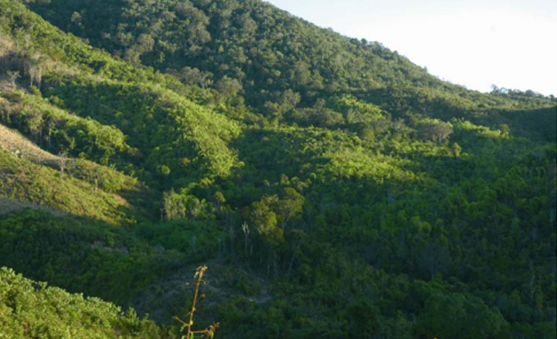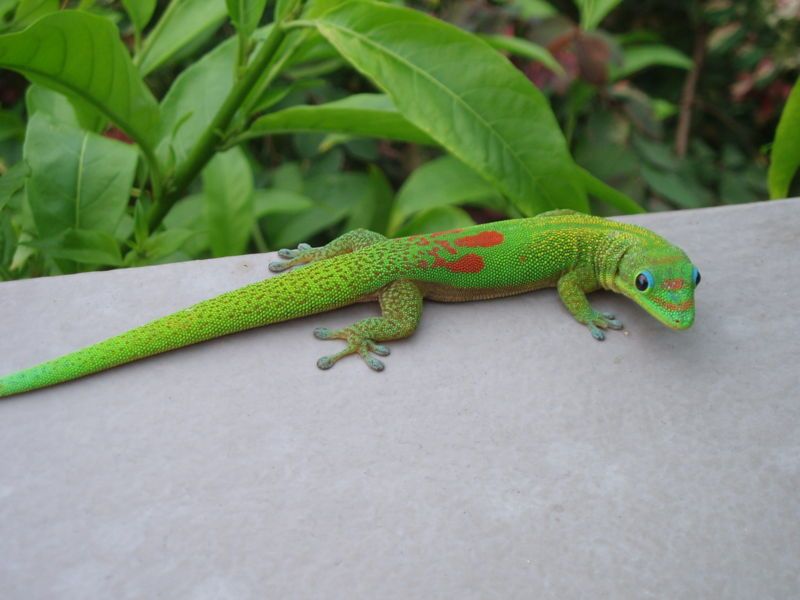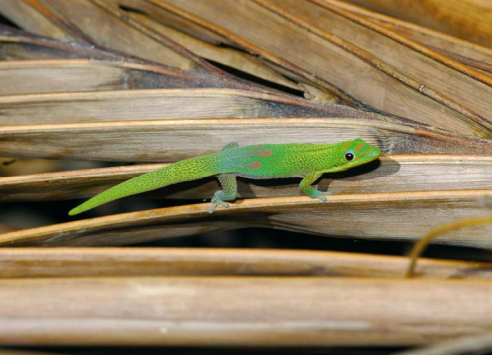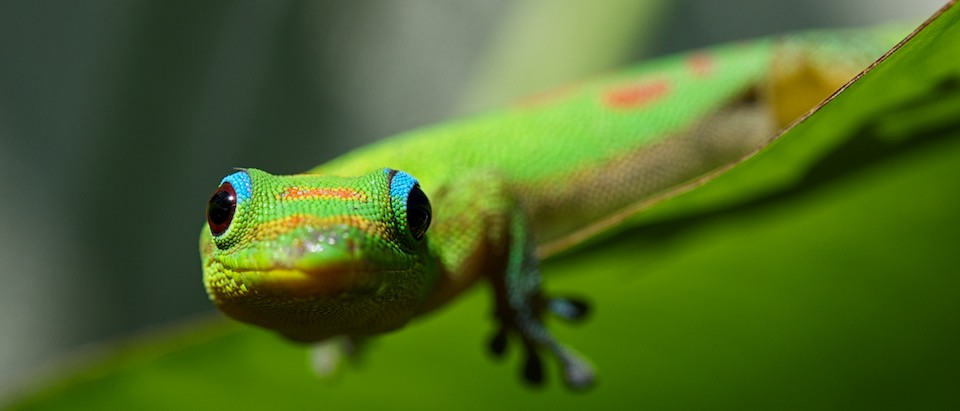Habitat and Geography
The Phelsuma laticauda
lizards typically live in humid, tropical climates with large
amounts of rain and moderate to warm temperatures. They inhabit
trees and other forms of brush, but
not dense forests, for example,
coconut palm trees, bamboo
stalks,
cinnamon plants, gardens or fields, and
vegetation found near rivers and
streams (Van Heygen, E., 2004, Hertner, G., MD, 2007). The
Phelsuma laticauda species can often be observed residing in
Ravenala trees in a variety of locations. This species lives
in highly vegetative areas, with little to no human activity. P. laticauda has been recorded at a
variety of altitudes ranging from several hundred meters to
low-lying valleys between lower mountains (Van Heygen, E.,
2004). 
Photo courtesy of
Emmanuel Van Heygen
P. laticauda is found mainly on the island of
Madagascar, but has also radiated to the nearby islands of
Comoros and Seychelles (Rocha, S., Vences, M., Glaw, F., Posada,
D., and D.J. Harris, 2009). In these regions, the Gold Dust Day
Gecko is typically located in
the northern parts, specifically the Sambirano area, and to the
north east region by the coast. In addition to its endemic
habitats, it has been introduced to the islands of French
Polynesia and, more recently, to Hawaii in 1974. Since its
arrival in Hawaii, P. laticauda has spread to many of the nearby
islands including Oahu, Hawaii, Kauai, Maui, and Molokai
(Goldberg, S.R., and F. Kraus, 2011). The major theory of the
adaptive radiation of the Phelsuma genus is that the genus
originated from Madagascar, and migrated to the surrounding
regions, including the archipelagos and islands. Another theory,
while less supported, suggests that the genus Phelsuma
originated in Southeast Asia and migrated to the islands of the
Southwest Indian Ocean. This theory is typically not supported
due to the long distance between land masses and counteractive
water current of the Indian Ocean (Austin, J.J., Arnold, E.N.,
and C.G. Jones, 2003).

Photo courtesy of
The Living Rainforest
The Phelsuma laticauda is a very adaptive species capable of
migrating and adapting to a variety of habitats as shown above.
This allows it to thrive in many tropical areas from Madagascar
all the way to the Hawaiian Islands. This species lives in
competition with other varieties of the genus Phelsuma, such as
the P. madagascariensis grandis, P. quadriocellata parva,
P.
abbotti chekei, and P. seippi. The Phelsuma laticauda also
shares its habitat with numerous species of geckos, lizards,
insects, and mammals (Van Heygen, E., 2004).

Photo courtesy of
Emmanuel Van Heygen
In areas with a higher population of humans, Phelsuma laticauda
are at risk of losing their environment to farmers through a
process known as “tavy”, which means slash and burn method of
deforestation (Van
Heygen, E., 2004). Due to the poverty of the area, the farmers
are highly dependent on the land for its natural resources, so
they cut down and burn certain areas of the forest in order to
grow their crops. While the Phelsuma laticauda is a very
successful and adaptive species, this destruction of their
habitat could impact their rate of survival in the future.
